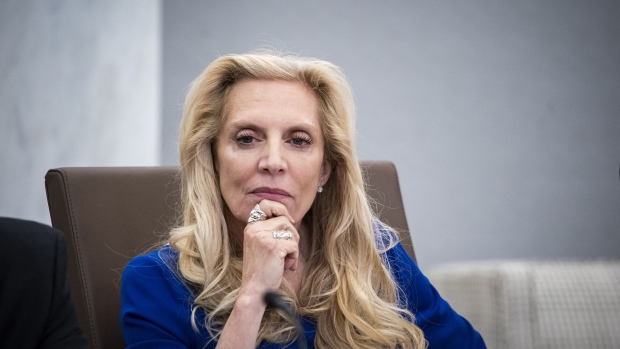Oct 10, 2022
Brainard Offers Case for Caution as Fed Hikes Rates Aggressively
, Bloomberg News

(Bloomberg) -- Federal Reserve Vice Chair Lael Brainard laid out a case for exercising caution as the central bank raises interest rates to curb high inflation, noting that previous increases are still working through the economy in a time of high global and financial uncertainty.
“Moving forward deliberately and in a data-dependent manner will enable us to learn how economic activity, employment, and inflation are adjusting to cumulative tightening in order to inform our assessments of the path of the policy rate,” she told the annual meeting of the National Association for Business Economics in Chicago on Monday.
“Monetary policy will be restrictive for some time to ensure that inflation moves back to target over time,” she said.
US central bankers appear to be readying their fourth straight 75 basis-point increase in interest rates when they meet Nov. 1-2 as they try to slow the economy and lower inflation.
Brainard noted that central banks around the world are tightening concurrently, and weaker demand abroad could spill back into the US. She also warned that lags in policy could impact the economy in the months ahead.
“We are starting to see the effects in some areas, but it will take some time for the cumulative tightening to transmit throughout the economy and to bring inflation down,” she said. “Uncertainty remains high, and I am paying close attention to the evolution of the outlook as well as global risks.”
The Fed vice chair expressed similar concerns last month, though since then most of her colleagues at the central bank have reiterated their support for aggressive rate hikes without joining her in offering reasons for caution.
Fed officials forecast rates rising to 4.4% by the end of this year -- from a current target range of 3% to 3.25% -- and 4.6% in 2023, according to projections they updated last month.
Asked specifically about whether she thought a 4.5% terminal rate was too high or too low, Brainard declined to endorse a specific target and said policy will be informed by the data.
“The committee’s said the policy rate will increase further,” Brainard said in response to the question. “That assessment will reflect incoming data and the balance of risks domestically and globally.”
Economic reports have continued to show unrelenting price pressures and resilient demand. The personal consumption expenditures price index rose 4.9% for the 12 months ending August, minus food and energy, versus 4.7% for July.
Brainard made the case that inflation could slow if business mark-ups retreated, while also noting that lasting labor shortages may mean that job market slack doesn’t appear as quickly as in previous slow downs.
“There is ample room for margin recompression to help reduce goods inflation as demand cools, supply constraints ease, and inventories increase,” Brainard said. “Businesses that faced significant challenges finding and retaining qualified workers following the pandemic may be more inclined than in past cycles to retain rather than lay off their workers as demand weakens.”
Financial markets are pricing in another 75 basis-point hike in the benchmark lending rate following a strong jobs report for September that saw employers add 263,000 new jobs.
Earlier Monday, Chicago Fed President Charles Evans, who is a non-voting member of the panel that sets interest rates this year, said he expects the benchmark lending rate to rise “a bit above” 4.5% early next year and then remain there as officials assess how their policy is impacting the economy.
(Adds Brainard comment on terminal rate in tenth paragraphs.)
©2022 Bloomberg L.P.






